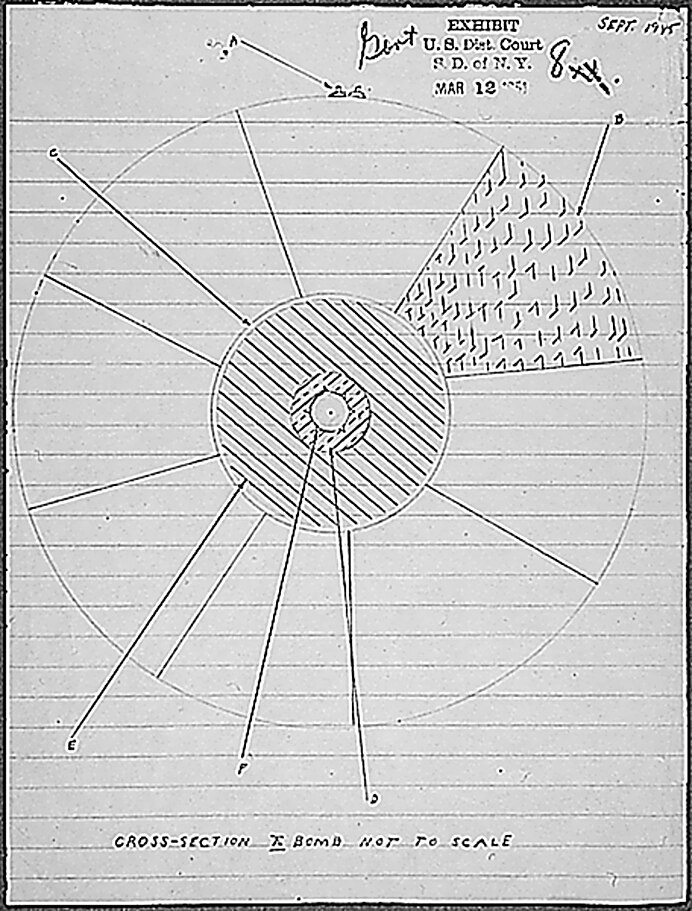Weapons
Nuclear
Building on major scientific breakthroughs made during the 1930s, in particular the ideas of nuclear fission and Leo Szilard's idea of a chain reaction the United Kingdom began the world's first nuclear weapons research project, codenamed Tube Alloys, in 1941, during World War II. The United States, in collaboration with the United Kingdom, initiated the Manhattan Project the following year to build a weapon using nuclear fission. The project also involved Canada. The first test took place on July 16, 1945. In August 1945, the atomic bombings of Hiroshima and Nagasaki were conducted by the United States, with British consent, against Japan at the close of that war, standing to date as the only use of nuclear weapons in hostilities.
In the first few years of the cold war it was believed that it would be about 8-10 years before the Soviet Union developed its first nuclear weapon. In fact they started research as early as 1942. As a consequence for the first few years of its existence the majority of training still contained an element relating to conventional high explosive (HE) weapons. In 1951 the first civil Defence Corps training related to nuclear weapons started, even though the Corps had no working Geiger counters or survey meters.
In 1946 Russia's first nuclear reactor went critical, and by 1949 they were producing the first plutonium, and were planning an implosion type device, based on the Manhattan Project "Fat Man". They were helped in this by information from various spies who were working within the Manhattan Project, including Klaus Fuchs, Harry Gold, Theodore Hall and others. Doubtless the USSR would have built their own weapon without such help, but it would probably have taken considerably longer.The USSR detonated their first weapon on 29 August 1949, RDS-1, at the Semipalatinsk Test Site of the Kazakh SSR (present day Republic of Kazakhstan). It was still considered that HE weapons were the main threat, and would be until the USSR developed the necessary delivery systems and larger scale production.
Russia detonated its first thermonuclear weapon, RDS-6S, on 12 August 1953, in a test given the code name by the Allies of "Joe 4". The test produced a yield of 400 kilotons, about ten times more powerful than any previous Soviet test. Around this time the United States detonated its first super using radiation compression on 1 November 1952, code-named Mike. The key difference between these detonations is that the Soviet device was a deliverable weapon, whereas the US was only a demonstration of the principle and could not have been carried by any aircraft of the time.
A race now ensued both between the USSR and USA and other countries to produce bigger and better weapons and delivery systems. This happened until the end of the Cold War in about 1990.


